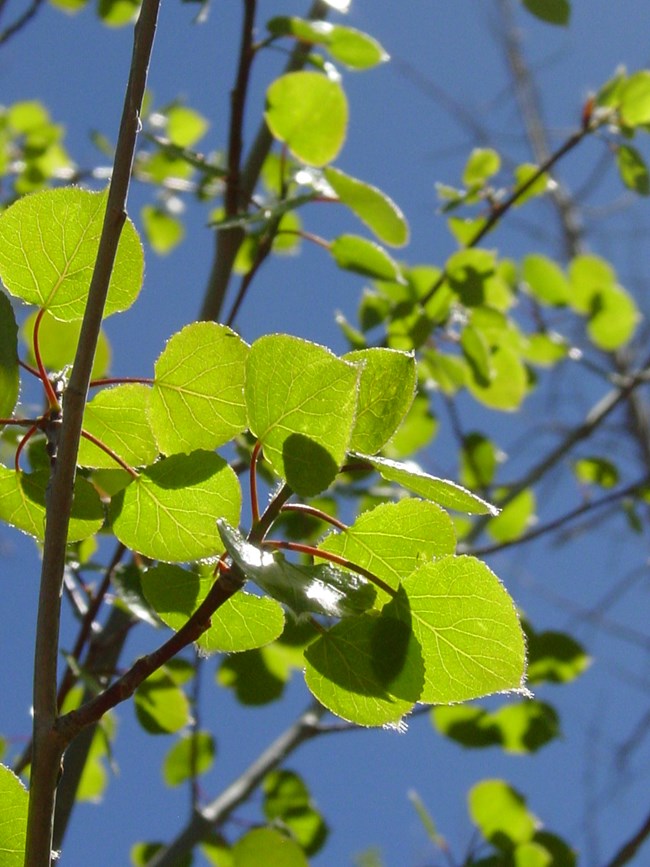
NPS/ Parashant’s dry soils limit where the trees can mature since Aspens need ample moisture to stay alive. Most often found in the higher elevations of the monument, even at 6500 feet above sea level, aspens only grow where there is a constant stream of water or a hearty supply of water underground. Buried beneath the soil lies a complex network of pale roots, each one connected to the next. Grown trees reproduce by sending out shoots and suckers from their long roots resulting in identical aspens or clones. There are advantages to the tree reproducing this way. As the climate warms up the tree is able to slowly move year after year to a higher or lower elevation letting parts of it die or survive as necessary. When the weather begins to cool and the days shorten each member of a clone will begin to change color at the same time. The leaves change into vibrate shades of gold, orange, and red contrasting against the autumn sky. These color changes indicate if different clones are growing in the same area as different patches of color indicate different clones. |
Last updated: January 15, 2020
